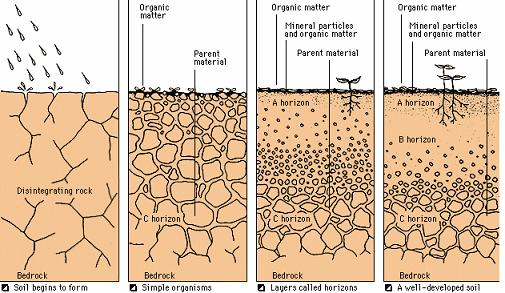
 |
|

Kinds of parent material. The type of parent material helps determine the kinds of mineral particles in a soil. A process called weathering breaks down parent material into mineral particles. There are two kinds of weathering, physical disintegration and chemical decomposition. Physical disintegration is caused by ice, rain, and other forces. They wear down rocks into smaller particles that have the same composition as the parent material. Sand and silt result from physical disintegration.
|
|
|---|